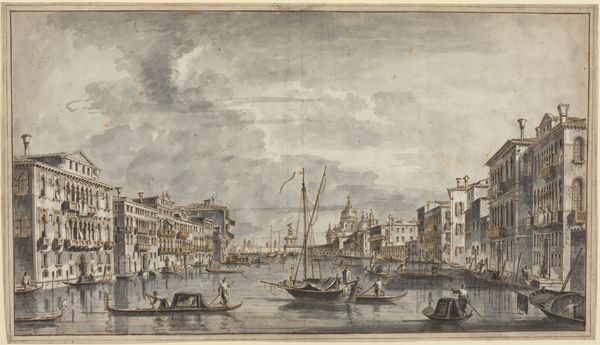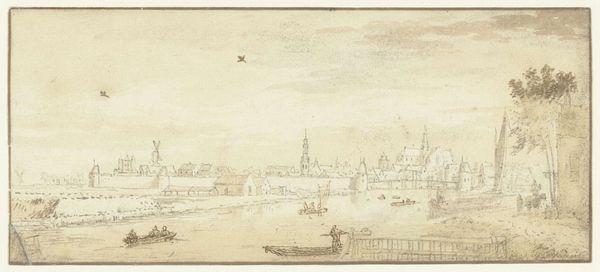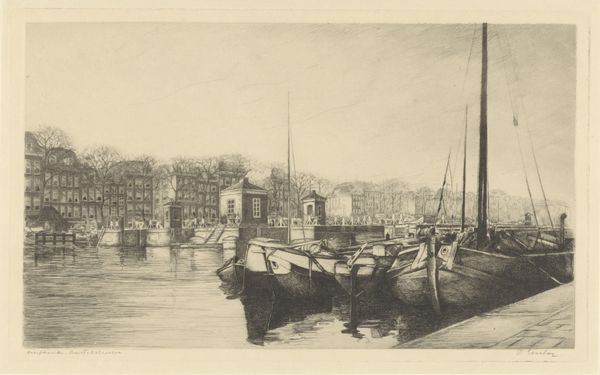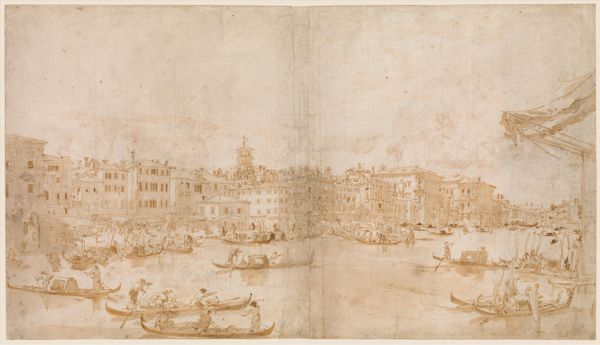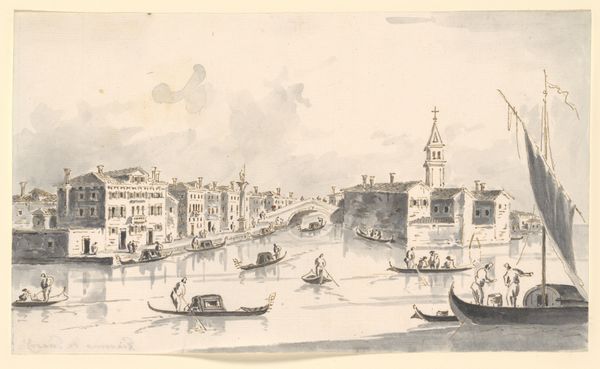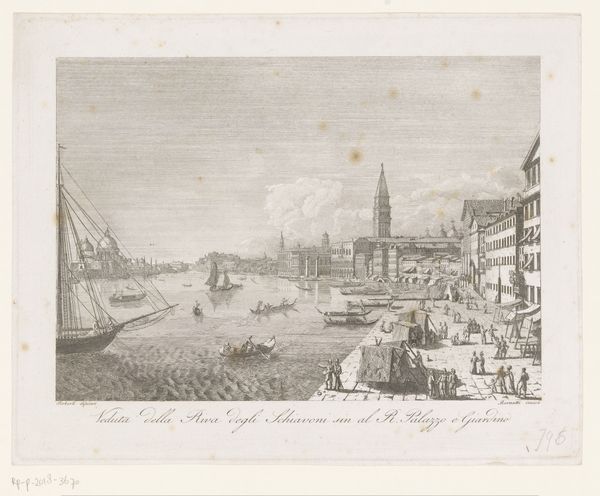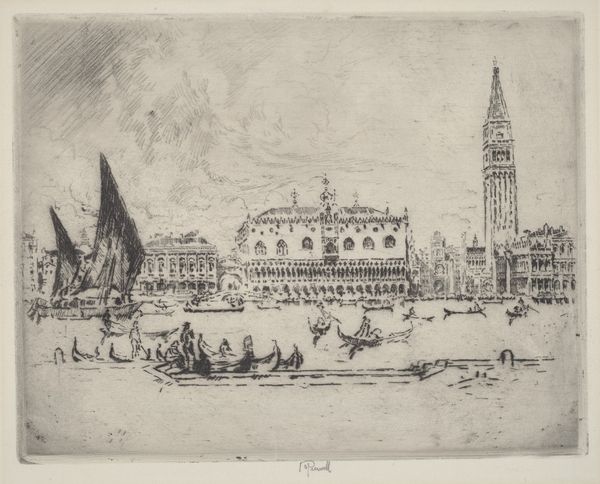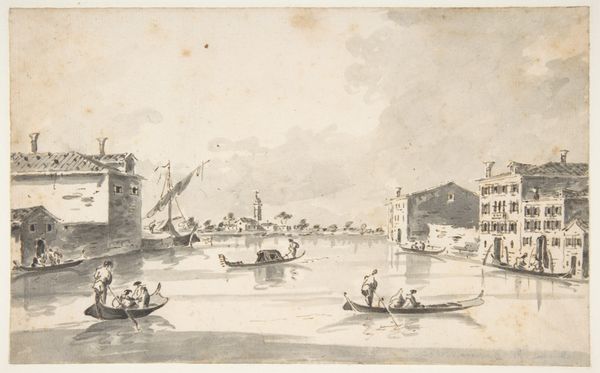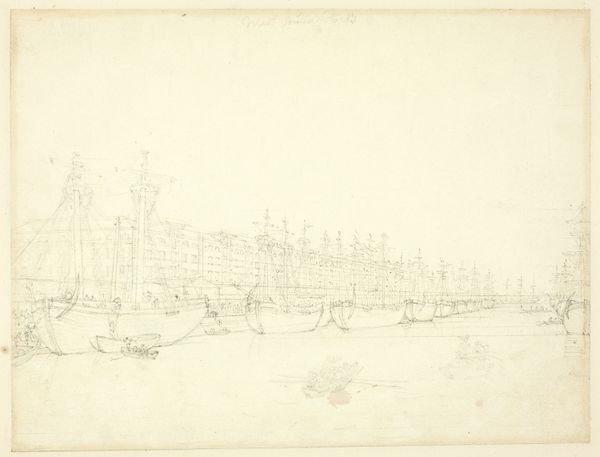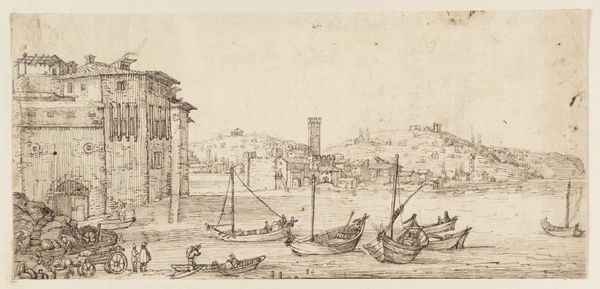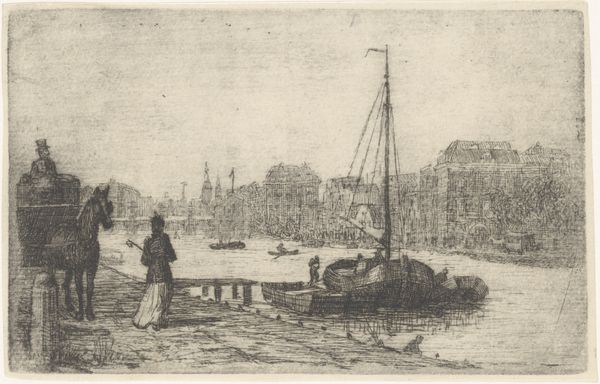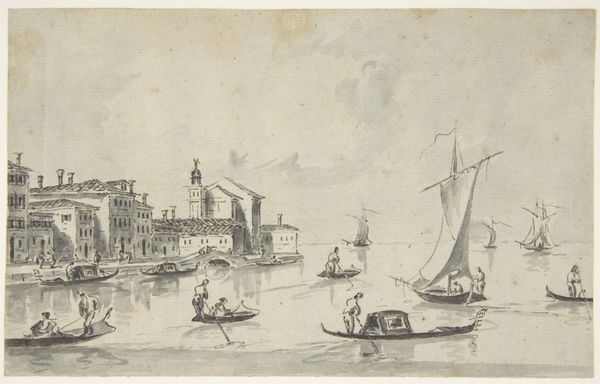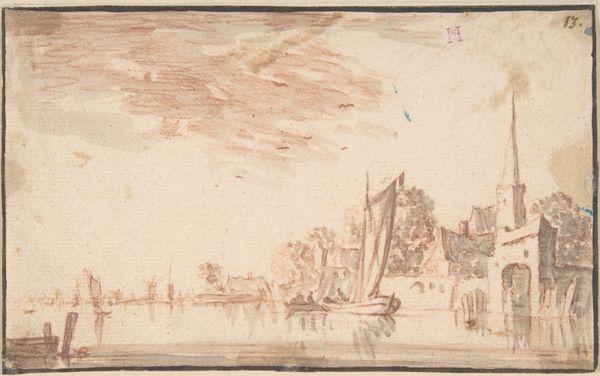
drawing, etching, ink
#
drawing
#
venetian-painting
#
baroque
#
etching
#
landscape
#
etching
#
ink
#
line
#
cityscape
#
realism
Dimensions: height 266 mm, width 389 mm
Copyright: Rijks Museum: Open Domain
Editor: So, here we have Canaletto's etching "The Grand Canal, Venice," dating from around 1738-1740. The incredible detail, captured simply in ink, is what gets me. All the bustling activity along the canal feels palpable. How do you interpret the Venice that Canaletto is presenting here? Curator: Well, considering the context of the 18th century, we're looking at a Venice very conscious of its image. The "cityscape" theme isn’t just picturesque. Canaletto was, in a sense, participating in a carefully crafted performance of Venetian identity, mostly for visitors and trade. This wasn't just documentation; it was marketing! Editor: Marketing? You mean these weren't just souvenirs? Curator: More than souvenirs, these images played a crucial role in shaping the *idea* of Venice in the European imagination. Etchings like this one made Venice reproducible and, importantly, *consumable*. Think about the wealthy English traveling on the Grand Tour – what better way to take a piece of Venice home? But, I wonder, whose Venice is being represented, and who gets excluded from this picture? Editor: I see what you mean. He's not exactly capturing the everyday struggles of the common person, is he? Curator: Exactly! This idealized version conveniently overlooks social inequalities and political tensions. It is interesting to note that his work can also be considered an early form of influencer culture, by building a public identity of a tourist destination. Editor: That really changes my perspective. I was initially charmed by the apparent realism of the drawing, but now I realize how constructed this reality truly is. Thank you for unveiling such an amazing interpretation. Curator: Likewise, looking closely reminds us art's public role evolves over time, adapting to changing cultural values and socioeconomic priorities.
Comments
No comments
Be the first to comment and join the conversation on the ultimate creative platform.
